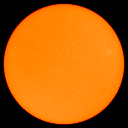Astronomy is a very popular function of the Petroglyphs site. We're in an area with almost no light pollution, low horizons all the way around, and some on-site telescopes. We have several astronomy nights each year, including an event lasting three nights where astronomers are welcome to come and set up their equipment on-site for overnight viewing. We are also planning on having solar glasses on hand for sunspot viewing, and hope to develop more solar programs in the future. You can see the page in progress here. Our area is one of the best in the country for stargazing. We're in a zone where you can normally see stars of magnitude 6.8 (explained here). If you don't want to look it up, that means that from our location you can see so many stars that it can be hard to pick out the constellations! The Milky Way is easily visible, and most of the fine details can be seen with the naked eye. Our astronomy events include:
We are always adding new information sheets for our visitors, including activity pages for Mars and the Moon; the glow-in-the-dark constellation pages; how to tell time by the Big Dipper; what a "blue moon" actually is; Native American names for the full moons; and anything else we can come up with that we think might be of interest. We have two telescopes at present. One is a Meade ETX-125AT Maksutov-Cassegrain (5" aperture, 1900mm focal length, f/15) and the other is a Celestron refractor (60mm lens, 600mm focal length, f/10). We also have binoculars and a spotting scope mounted on tripods, and hope to have a camera system hooked up to the telescopes soon so we can put the images on a screen instead of letting one person look at a time. A website that lists "dark sky" locations around the country. We're included in the list for Minnesota. And finally, if you'd like to know what the probable viewing conditions will be before you make the drive out here, here's the "Clear Sky Clock" viewing forecast for the Petroglyphs area. As a rule, for the "Sky" section, the darker the block, the better the viewing conditions. Petroglyphs Astronomy Links
And here are some information/actiity sheets we've worked up for children and adults. These are in PDF format. Main Page |

